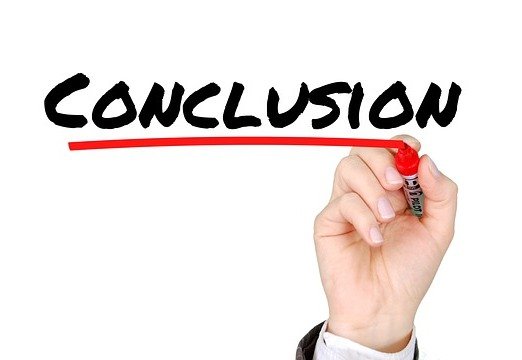For Evaluating Dividend Stocks Based On Dividend Yield
A stock’s dividend yield is a key metric for dividend investors. Leading me to this article in our dividend Q&A series.
To address the question: What is a good dividend yield? Afterward, you will be able to spot one when you see it.
Here’s the answer…
What Is A Good Dividend Yield?
A good dividend yield is high enough to meet your current dividend income needs. But low enough to suggest a company’s dividend is not at risk.
Dividend yields that meet these requirements will typically fall between 2% and 5%.
Since a stock with a yield of less than 2% may not provide the investor with enough current income. While stocks with dividend yields above 5% may indicate greater investment risk.
Risk refers to either a company’s dividend rate per share that may not increase over time. Or, in the worst case, a dividend that is susceptible to being reduced in the not-to-distant future.

Disclosure: At no cost to you, I may get commissions for purchases made through links in this post.
Next, let’s cover some important definitions. Then dive deeper into the answer to today’s question.
Unless, of course, you are ready for something different. If so, check this out…
Everything you Want to Know About Dividends
…but you are afraid to ask!
Otherwise, back to today’s article…
How Is Dividend Yield Calculated?
To calculate a stocks dividend yield, determine the last dividend approved by the company. And multiply it by the number of times per year the company regularly pays dividends.
Doing so will give you the annual forward dividend rate per share.
Then divide the annual forward dividend by the current stock price. This calculation produces the stock’s current dividend yield. Represented as a percentage.
Now that we know the calculation. What can we use the result for to make our knowledge of dividends better?
What Is Dividend Yield Useful For?
We already know that dividend yield is expressed as a percentage.
This percentage is useful because it shows how much a company pays its shareholders. As it relates to the company’s stock price per share.
Making it a useful metric for comparison purposes. Either to the dividend yields of other stocks. Or, the dividend yield of the stock market as a whole.
It also indicates the cash return an investor can expect. For every dollar, they invest.
For example, invest $500 in a dividend stock with a 2% dividend yield. Then, the investor can expect to receive $10 per year in dividends.
When Is A Dividend Yield Too Low?
The answer to this question is….it depends.
Depends on what? Well, tip #1 says…
It depends on your income requirements from investing in dividend stocks. As you know, in answering today’s question regarding what is a good dividend yield, I used 2%.
You are free to set a higher or lower percentage. Depending on your unique circumstances.
Going back to the previous example. If $10 in annual dividend income is not enough from your $500 investment.
Then perhaps, set your minimum acceptable dividend yield at 3%. So you will earn more dividend income right away.
When Is A Dividend Yield Too High?
Next, tip #2 for understanding dividend yield tells us…
A dividend yield is too high when it indicates the dividend is at risk.
A risk that the dividend rate per share will not grow over time. Or, is susceptible to being reduced.
What Causes A Dividend Yield To Get Too High?
Dividend yields have an inverse relationship with a stock’s price. Thus, a falling stock price will create a higher dividend yield.
I think we can all agree that a falling stock creates investment losses. And is not normally a good sign. Even for dividend investors collecting dividend income.
Yes. Sometimes a falling stock price creates a good buying opportunity.
However, many other times a falling stock price is a warning signal. About a company that is struggling operationally, financially, or both.
So, when company performance issues like this crop up. It’s not time to be investing for the dividends the stock provides.
On the other hand, most of the time we want our stocks to go up. Which drives the stock’s dividend yield down.
Another reason for high dividend yields is a good thing. Specifically, a company that is rapidly increasing its dividend rate per share may have a higher dividend yield.
Because it increases the annual forward dividend rate per share. Then dividing the higher forward dividend by the stock price.
Thus, we get a higher dividend yield. It is kind of like free money.
But, hold on…
If a company is rapidly increasing its dividend rate per share. And doing so because of better financial performance.
The stock price will usually rise right along with the dividend. Thus, keeping the dividend yield lower. Not higher.
As a result, dividend increases by company management. Will typically not result in a high dividend yield. Not when it’s due to better financial performance.
Next, let’s talk about evaluating risk…

Evaluating High Dividend Yields For Risk
As you know, in answering today’s question regarding what is a good dividend yield, I used 5%. As the top end of the range.
You can set the high-end of your range higher or lower. But then that begs this question. How can you, the investor, better assess the risks associated with a high dividend yield?
Since management is not required to pay dividends to shareholders. And they can reduce, suspend, or eliminate their stock dividend at any time.
So, here are some suggestions to evaluate dividend safety when considering investing in stocks with higher dividend yields…
Review The Dividend Payout Ratio
Simply put, a company’s dividend payout ratio is the value of its financial resources paid to shareholders in the form of cash dividends.
Where a company’s financial resources are typically defined as the most recent annual accounting earnings or cash flow.
Then, by taking dividends paid, and dividing them by earnings or cash flow. We get the dividend payout ratio.
Bringing me to tip #3…
The higher the dividend payout ratio. The more risk you are taking on by investing in a high dividend stock yield.
Since, because of the high payout ratio. The company paying the dividend may not be able to sustain it. If and when they encounter financial difficulties.
Unfortunately, there is no one size fits all rule of thumb. Of what is an acceptably low dividend payout ratio.
It depends on the company. And the industry in which they operate.
However, I will say this. A dividend payout ratio of 60% or less. Enhances dividend safety.
Look At The Companies Dividend Payment History
Next, tip #4…
Check into the company’s dividend payment history. Find out how long they have been paying dividends.
And if they have decided to reduce the dividend in the past. Since long histories of stable or rising dividend payments. Indicate a high degree of dividend safety.
Speaking of rising dividend payments…
Assess The Companies Dividend Growth Rate Per Share
Finally, we have tip #5…
A company that is consistently increasing the dividend rate per share is a good sign. Since a rising dividend is safer than a stagnant dividend rate.
Furthermore, many companies have long annual dividend increase streaks.
And once they are recognized for such accomplishments. They are more hesitant to reduce the dividend in the future.
Get Some Help With Your Stock Choices
If analyzing companies and their stocks are not your thing. Or, you just don’t have the time.
Then consider getting some help. To minimize your risk of investing in higher dividend yield stocks.
I like the Simply Investing Report & Analysis Platform, an interactive database of dividend stocks.
It includes all of the latest dividend metrics. Many of which we have discussed today. And recommendations on the best dividend stocks to buy and when to buy them.
Or, consider the Motley Fool Stock Advisor. For top-notch stock recommendations delivered to your inbox every month.
Okay. Now that you know the difference between good dividend yields. And bad dividend yields.
Allow me to wrap up with a few parting comments.
What Is A Good Dividend Yield?
In my opinion, a good dividend yield will typically fall in the range of 2% to 5%.
That doesn’t necessarily mean a yield outside of that range is bad. It just means you need to do a little more homework.
First, for stock yields below 2%. Ask yourself if this amount of dividend income is enough. To meet your needs and investment objectives.
Second, for yields above 5%. Do some more research.
To make a better assessment of dividend safety. Then, compare that safety level to your risk tolerance.
By thinking about dividend yields this way. You may find that some that are below 2%, Or, those that are above 5% are good.
Finally, never blindly assume that just because a stock’s dividend yield is between 2% and 5%. It is therefore always good. Do your research and make sure you understand what you are investing in and why.
After all, it’s your money! So, invest it wisely.
More Reading About Dividend Stocks And Dividend Investing
Before you go, be sure to take a look at our full archives of…
Dividend-Paying Stock Articles

Author Bio: Tom Scott founded the consulting and coaching firm Dividends Diversify, LLC. He leverages his expertise and decades of experience in goal setting, relocation assistance, and investing for long-term wealth to help clients reach their full potential.
Hopefully, you can now answer this question for yourself…